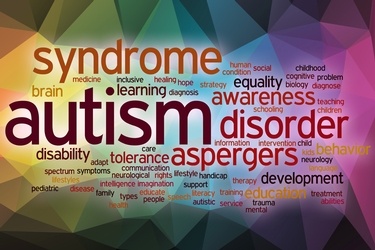Some parents know right away that something is wrong. Others won't suspect until their toddler suddenly stops babbling or making eye contact. Either way, learning that your child is autistic can be life-changing.
The focus on early detection and intervention on autistic disorders has increased significantly over the last decade. A study released in 2009 by the U.S. Centers for Disease Control and Prevention (CDC) revealed an alarming increase in the prevalence of these disorders. One out of every 110 children now is affected.
The Autism Society has deemed the month of April as National Autism Awareness Month to raise awareness across the country. The non-profit group estimates that about 1.5 million Americans currently are living with autism disorders, which are almost always lifelong afflictions. With one in 70 affected, boys are four to five times more likely than girls to be diagnosed.
In the early 1940s the Austrian-born physician and founder of the Johns Hopkins Children’s Psychiatric Clinic, Leo Kanner, used the term "autism” to describe young patients with withdrawn behavior. Then in 1944 another Austrian physician, Hans Asperger, described a similar behavioral disorder but less severe or, high-functioning type of autism.
Today, autism is often referred to as "autism spectrum disorders" (ASDs). As the label "spectrum" suggests, autism disorders vary greatly in severity, from uncomfortable social challenges associated with ASDs syndrome to the nearly 40 percent who never learn to talk. ASDs include:
- Autistic disorder - Sometimes referred to as "classic" autism, this diagnosis is characterized by significant language delays, social and communication challenges and unusual behaviors and interests. In many people Autism is accompanied by an intellectual disability.
- Asperger’s syndrome - Asperger’s is marked by unusual behavior and interests. People often struggle to recognize social cues and interact with others. Asperger’s syndrome typically does not cause language problems or intellectual disability.
- Pervasive developmental disorder not otherwise specified (PDD-NOS) - PDD-NOS, also referred to as "atypical" autism, is a disorder with fewer and milder symptoms than Autism or Asperger’s. The symptoms typically affect only social interaction or communication.
- Rett's and childhood disintegrative disorders - As a child grows, a loss of social, language and/or motor skills begin to appear late in a child’s development.
By standard definition, autism spectrum disorders begin before the age of three. However, the CDC says many children are not diagnosed until about 5 years of age. The following symptoms may suggest an autistic disorder in children:
- Not responding to their name by 12-months-old
- Not pointing to or showing interest in objects by 14-months-old
- Not engaging in "pretend" games by 18-months-old
- Avoiding eye contact or preferring to be alone
- Being unaware of other people's feelings or not talking about their own feelings
- Having delayed speech and language skills
- Exhibiting echolalia, which is repeating words or phrases over and over
- Responding to questions with unrelated answers
- Getting upset from minor changes to routine or appearance
- Exhibiting obsessive interests
- Flapping their hands, rocking their body or spinning in circles
- Experiencing unusual reactions to the way things sound, smell, taste, look or feel
Research continues to identify the causes of autism disorders, but scientists believe they are related to deficiencies in brain structure or function. In addition to genetic causes, researchers are studying the role of brain development and environmental factors, such as viral infections and exposure to chemicals and other toxins.
Childhood vaccinations have also been linked to autism, but research has shown that the development of symptoms near the time of getting shots is not causal, but coincidental. Diagnosis often comes at the age immunization occurs.
For more information about autism, please visit http://www.autism-society.org or http://www.autismspeaks.org.




